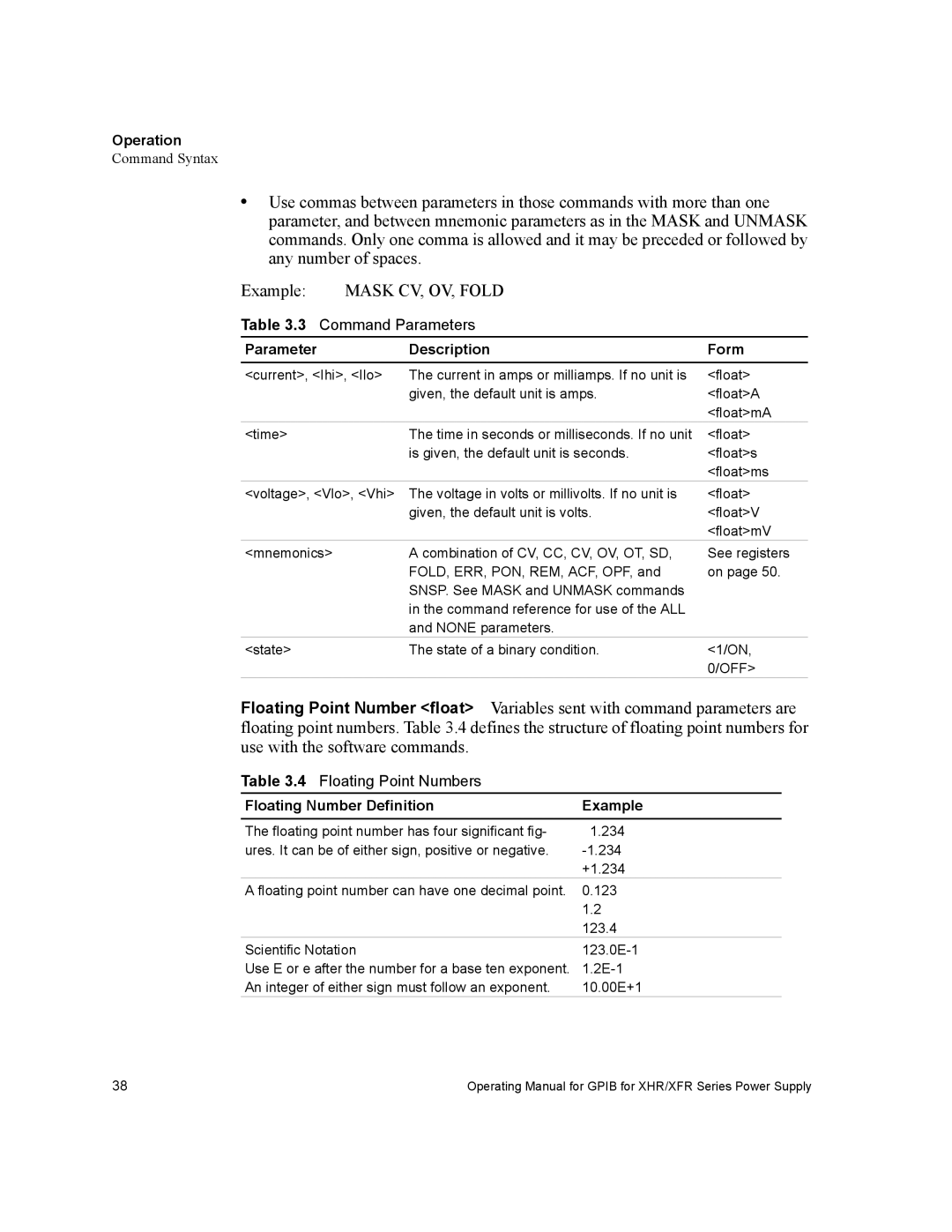Operation
Command Syntax
•Use commas between parameters in those commands with more than one parameter, and between mnemonic parameters as in the MASK and UNMASK commands. Only one comma is allowed and it may be preceded or followed by any number of spaces.
Example: | MASK CV, OV, FOLD |
| |
Table 3.3 | Command Parameters |
| |
Parameter |
| Description | Form |
|
|
| |
<current>, <Ihi>, <Ilo> | The current in amps or milliamps. If no unit is | <float> | |
|
| given, the default unit is amps. | <float>A |
|
|
| <float>mA |
<time> |
| The time in seconds or milliseconds. If no unit | <float> |
|
| is given, the default unit is seconds. | <float>s |
|
|
| <float>ms |
<voltage>, <Vlo>, <Vhi> | The voltage in volts or millivolts. If no unit is | <float> | |
|
| given, the default unit is volts. | <float>V |
|
|
| <float>mV |
<mnemonics> | A combination of CV, CC, CV, OV, OT, SD, | See registers | |
|
| FOLD, ERR, PON, REM, ACF, OPF, and | on page 50. |
|
| SNSP. See MASK and UNMASK commands |
|
|
| in the command reference for use of the ALL |
|
|
| and NONE parameters. |
|
<state> |
| The state of a binary condition. | <1/ON, |
|
|
| 0/OFF> |
Floating Point Number <float> Variables sent with command parameters are floating point numbers. Table 3.4 defines the structure of floating point numbers for use with the software commands.
Table 3.4 Floating Point Numbers
Floating Number Definition | Example |
The floating point number has four significant fig- | 1.234 |
ures. It can be of either sign, positive or negative. | |
| +1.234 |
A floating point number can have one decimal point. | 0.123 |
| 1.2 |
| 123.4 |
Scientific Notation | |
Use E or e after the number for a base ten exponent. | |
An integer of either sign must follow an exponent. | 10.00E+1 |
38 | Operating Manual for GPIB for XHR/XFR Series Power Supply |
